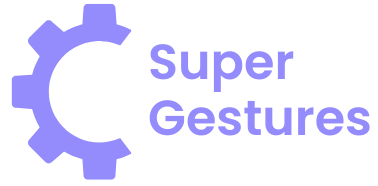Table of Contents
ToggleIn a world where TikTok dances and viral memes reign supreme, wouldn’t it be cool if teens could turn those creative sparks into something even more powerful? Enter website coding tutorials! These gems offer the perfect blend of fun and knowledge, helping young minds transform their wild ideas into fully functional websites.
Overview of Website Coding Tutorials for Teens
Website coding tutorials cater specifically to teenagers looking to explore their creative potentials. These tutorials offer a variety of programming languages suitable for beginners, like HTML, CSS, and JavaScript. Engaging with these languages allows teens to build their unique websites easily.
Interactive platforms and video content enhance the learning experience. Teenagers can follow along at their own pace while developing new skills in a fun environment. Moreover, free resources are widely available, making coding accessible for all teens.
Project-based tutorials contribute significantly to the learning process. Completing small projects helps solidify concepts, encouraging teens to experiment with different styles and designs. This hands-on approach promotes critical thinking and problem-solving skills.
Additionally, community support plays a vital role in the learning journey. Many online forums and social media groups connect young coders, fostering collaboration and sharing of ideas. Networking with like-minded peers can spark inspiration and innovation.
Tutorials often incorporate real-world applications, linking coding with popular trends and interests. This relevance captures teens’ attention, making learning more engaging. Lastly, coding skills equip teenagers with essential tools for future opportunities in technology-driven careers.
Benefits of Learning to Code Early
Learning to code early offers numerous advantages for teens. Engaging in website coding tutorials enhances cognitive development and prepares young individuals for the future.
Enhancing Problem-Solving Skills
Developing problem-solving skills ranks among the most significant benefits of coding. Teens learn to break down complex challenges into manageable parts. They practice logical thinking when troubleshooting errors. Each coding project presents opportunities to devise creative solutions. The iterative process of coding fosters resilience, encouraging students to learn from mistakes and try again. As a result, young coders improve their analytical abilities and gain confidence in tackling various problems.
Boosting Future Career Opportunities
Acquiring coding skills increases future career opportunities significantly. Technology continues to evolve, and employers prioritize candidates proficient in programming languages. Coding literacy distinguishes teens in a competitive job market. Many industries seek individuals who can develop websites, apps, and software solutions. Opportunities in fields such as web development, game design, and software engineering expand with coding expertise. By mastering these skills early, teens position themselves for success in technology-driven careers.
Popular Coding Languages for Teens
Teens often gravitate towards coding languages that are both engaging and foundational. The following languages are especially popular and beneficial for young learners.
HTML and CSS
HTML serves as the backbone of web pages, allowing teens to structure content effectively. This markup language focuses on creating the layout and organization of text and images. CSS complements HTML by enabling style customization, such as colors, fonts, and spacing. With these two languages, young coders can build visually appealing websites from scratch. Immediate feedback from browsers enhances the learning experience, allowing teens to see changes in real-time. Tutorials often combine HTML and CSS, making it easier for beginners to grasp both concepts together. Young creators can complete projects, like personal blogs or portfolios, showcasing their newfound skills.
JavaScript
JavaScript adds interactivity to websites, making it essential for teens eager to create dynamic user experiences. This programming language empowers coders to implement features like animations, responsive design, and interactive forms. By learning JavaScript, teens develop problem-solving abilities as they debug their code. Numerous online resources provide gamified lessons, keeping learners engaged while they practice. Teens can also explore libraries and frameworks like jQuery and React, which simplify development. Real-world applications of JavaScript make it an attractive option, as young coders can see their skills utilized in popular platforms. Engaging tutorials often highlight projects relevant to their interests, motivating sustained learning.
Best Websites for Coding Tutorials
Numerous platforms provide excellent coding tutorials tailored for teens. The right website can make learning more engaging and effective.
Codecademy
Codecademy offers interactive coding lessons in languages like HTML, CSS, and JavaScript. Teens can complete hands-on projects that reinforce their understanding. The platform’s gamified learning approach keeps users motivated and encourages consistent practice. Immediate feedback on coding exercises helps learners correct mistakes and deepen comprehension. With a structured curriculum, Codecademy supports beginners while presenting challenges as they advance. The community forums enable collaboration and discussion, allowing teens to seek help from peers and educators.
Khan Academy
Khan Academy provides an extensive library of coding tutorials suitable for teens. Users find detailed lessons focused on web development, including HTML, CSS, and JavaScript. Through video content and interactive coding challenges, learners can grasp complex concepts easily. Engaging visualizations and step-by-step guides simplify the coding process. Students also access a supportive community for questions and encouragement. The self-paced nature of Khan Academy allows teens to learn at their convenience. With diverse resources available, teens can explore various projects that cultivate valuable coding skills.
Tips for Teens to Get Started
Teens can embark on their coding journey by following a few targeted strategies. Focusing on structured approaches helps maintain motivation and clarity.
Setting Realistic Goals
Setting achievable goals promotes steady progress. Teens can start with small projects, like creating personal websites or simple games. Completing these projects fosters confidence and reinforces learning. Mapping out specific milestones allows for clear direction. For instance, mastering HTML tags serves as an excellent starting point before moving on to CSS for styling. Tracking progress through a checklist or journal encourages a sense of accomplishment and keeps coding sessions focused.
Finding a Community
Joining a coding community enhances the learning experience. Online forums and social media groups provide spaces for sharing ideas and seeking assistance. Connecting with fellow learners fosters collaboration and encourages growth. Participating in coding challenges or hackathons can expand skills and create networking opportunities. Platforms like GitHub and Discord often host active communities tailored for young coders. Engaging in discussions or sharing projects amplifies learning and inspires creativity. By working alongside peers, teens develop not just technical skills but also teamwork abilities.
Website coding tutorials offer teens a unique opportunity to blend creativity with technical skills. By engaging with interactive platforms and project-based learning, they can transform their ideas into real-world applications.
Learning coding at an early age not only enhances cognitive abilities but also prepares them for future career prospects in a technology-driven world. With access to free resources and supportive communities, teens can embark on their coding journey with confidence.
The skills gained through these tutorials will empower them to tackle challenges, think critically, and collaborate effectively. Embracing coding now sets the stage for a bright future in various fields, ensuring they’re well-equipped for the demands of tomorrow’s workforce.




